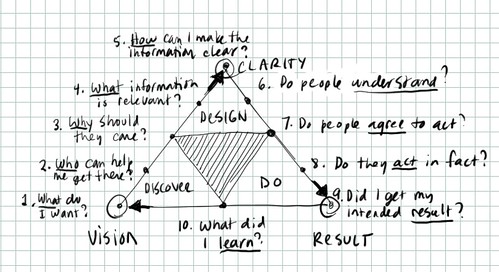All learning and improvement begins with action — with doing. For example, as a child you touch a hot stove.
Action leads to discovery; in this case, the discovery that the action led to pain, burning, discomfort.
Based on this discovery you design new ways of interacting with your environment.
Based on your design you do things differently. Over time this leads you closer and closer to your ideal relationship with your surroundings.
The entire process is called successive approximation.
Successive approximation is the secret sauce that makes methods like agile programming work so well.
It’s the same process that is at work when you have a conversation.
You say (do) something, and then, based on the feedback you receive (body language, facial expression, reply) you discover something, based on which you design your next utterance, etc.
Successive approximation works because, unlike many business thinking, planning and execution activities, it’s easy and natural; we do it instinctively.


